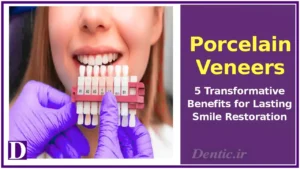
Table of Contents

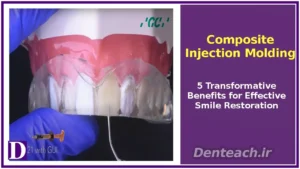
Composite Injection Molding: 5 Transformative Benefits for Effective Smile Restoration
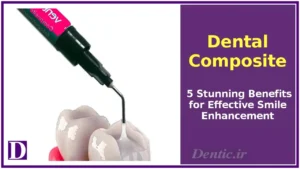
Dental Composite: 5 Stunning Benefits for Effective Smile Enhancement
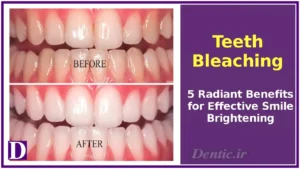
Teeth Bleaching: 5 Radiant Benefits for Effective Smile Brightening

Dental Veneer: 5 Stunning Benefits for Effective Smile Enhancement
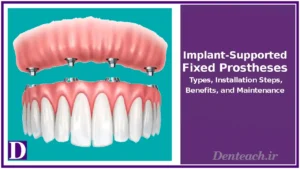
Implant-Supported Fixed Prostheses: 5 Advanced Benefits for Effective Smile Restoration

Porcelain veneers represent one of the most advanced and sought-after solutions in cosmetic dentistry for achieving a radiant, natural-looking smile. These thin, custom-made shells of high-quality porcelain are bonded to the front surface of teeth to correct aesthetic imperfections such as discoloration, chips, misalignments, or gaps. Unlike composite bonding, which is applied directly in the dental office, porcelain veneers require laboratory fabrication and slight tooth preparation, offering superior durability, stain resistance, and a lifelike appearance. Renowned for their long-lasting results and aesthetic excellence, porcelain veneers are an ideal choice for individuals seeking a permanent smile transformation. This article explores the durability, application process, five transformative benefits, limitations, maintenance protocols, comparisons with composite bonding, and practical guidance for patients and professionals considering this innovative solution.
What Are Porcelain Veneers?
Porcelain veneers are ultra-thin shells of dental ceramic, custom-designed for each patient, that are bonded to the front surface of teeth to enhance their appearance. They address issues such as severe discoloration, chipped or cracked teeth, minor misalignments, or gaps between teeth. Crafted in specialized dental laboratories and meticulously bonded by a skilled dentist, porcelain veneers create a uniform, radiant, and natural-looking smile. Their popularity in cosmetic dentistry stems from their exceptional stain resistance, durability, and ability to mimic the translucency of natural tooth enamel, combining cutting-edge technology with artistic precision.
Applications of Porcelain Veneers
Porcelain veneers are versatile, addressing a wide range of cosmetic and restorative dental concerns:
- Tooth Reshaping: Enhances the appearance of short, small, or irregularly shaped teeth for a balanced, harmonious smile.
- Gap Closure: Closes small to moderate gaps between teeth, creating a seamless, uniform appearance.
- Repairing Damage: Restores chipped, cracked, or worn teeth caused by trauma, erosion, or grinding.
- Concealing Discoloration: Covers severe stains or discoloration resistant to traditional whitening treatments, delivering a brighter smile.
- Minor Alignment Correction: Straightens slightly crooked or uneven teeth without the need for orthodontic treatment.
Step-by-Step Procedure for Porcelain Veneers
The porcelain veneer process is typically completed in two to three dental visits, depending on the complexity and number of teeth involved. The steps include:
- Initial Consultation and Smile Design
The dentist conducts a comprehensive evaluation of the patient’s oral health, examining teeth and gums to ensure suitability for veneers. Digital scans, X-rays, or intraoral photographs are used to assess tooth structure and plan the treatment. Advanced digital smile design software or temporary mock-ups are employed to visualize the anticipated results and align with the patient’s aesthetic goals. - Tooth Preparation
Unlike composite bonding, porcelain veneers require slight enamel reduction (typically 0.5 to 1 mm) to accommodate the veneer and ensure a natural appearance. This process is performed under local anesthesia to ensure patient comfort. Impressions or digital scans of the prepared teeth are taken to create custom veneers in a dental laboratory. - Veneer Fabrication
Porcelain veneers are crafted by skilled laboratory technicians using high-quality ceramic materials. This process usually takes 1 to 2 weeks. Temporary veneers may be placed to protect the prepared teeth during this period. - Veneer Bonding
Once ready, the veneers are placed on the teeth to check for fit, color, and shape. The tooth surface is prepared with a special etching solution, and the veneers are permanently bonded using strong dental adhesive. A special light is used to harden the adhesive, securing the veneers in place. - Polishing and Final Adjustments
After bonding, the veneers are polished to a smooth, glossy finish that mimics natural enamel. The dentist verifies bite alignment and patient comfort, making minor adjustments to ensure a seamless integration with adjacent teeth.
Total Procedure Time: Typically 2 to 4 weeks, involving 2 to 3 sessions, depending on the number of teeth and case complexity.
5 Transformative Benefits of Porcelain Veneers
Porcelain veneers offer a range of transformative advantages, making them a premier choice in cosmetic dentistry:
- Exceptional Durability: With proper care, porcelain veneers can last 10 to 15 years or more, providing a long-term investment in a radiant smile.
- Superior Stain Resistance: Porcelain is highly resistant to stains from coffee, tea, red wine, or smoking, maintaining its brightness for years.
- Natural-Looking Appearance: The translucency and color-matching properties of porcelain create a lifelike, aesthetically pleasing smile that blends seamlessly with natural teeth.
- Highly Customizable: Veneers are precisely designed to match the patient’s facial features and natural tooth color, ensuring personalized, harmonious results.
- Confidence Boost: A flawless, uniform smile enhances self-esteem, improving social and professional interactions with a radiant, confident appearance.
Limitations of Porcelain Veneers
Despite their numerous advantages, porcelain veneers have some limitations that patients and practitioners should consider:
- Higher Cost: More expensive than composite bonding, which may pose a financial barrier for some patients.
- Irreversible Process: Requires slight enamel removal, making the procedure non-reversible and necessitating a long-term commitment.
- Risk of Fracture: Though durable, veneers may crack or chip under excessive force, such as biting hard objects.
- Time-Intensive Process: Requires multiple visits and laboratory fabrication, making it lengthier than in-office procedures like composite bonding.
- Skill-Dependent Outcomes: The quality of results relies heavily on the expertise of the dentist and laboratory technician, requiring a highly skilled professional.
Comparison with Composite Bonding
| Feature | Porcelain Veneers | Composite Bonding |
|---|---|---|
| Primary Goal | Superior aesthetics, high durability | Aesthetic enhancement, minor corrections |
| Tooth Reduction | Slight (0.5–1 mm) | Minimal or none |
| Lifespan | 10–15 years | 5–7 years |
| Cost | High | Low to moderate |
| Procedure Time | 2–4 weeks | 1–2 sessions |
| Stain Resistance | High | Moderate |
| Repairability | More complex | Easy |
Key Considerations:
- Aesthetics and Durability: Porcelain veneers offer a more natural appearance and greater stain resistance, ideal for patients prioritizing longevity and aesthetics.
- Cost and Speed: Composite bonding is more affordable and faster, suitable for patients with budget constraints or immediate needs.
- Invasiveness: Composite bonding is less invasive, preserving more natural tooth structure, while porcelain veneers require enamel removal and are irreversible.
Maintenance Tips for Porcelain Veneers
To ensure the longevity and aesthetics of porcelain veneers, patients should follow these essential care practices:
- Rigorous Oral Hygiene: Brush twice daily with a soft-bristled toothbrush, floss regularly, and use an antibacterial mouthwash to prevent decay or gum disease that could compromise the veneer foundation.
- Avoid Hard Objects: Refrain from chewing hard items like ice, nuts, or using teeth to open packages to prevent chipping or fracturing the veneers.
- Protect Against Bruxism: Use a custom-fitted nightguard for patients who clench or grind their teeth to safeguard the veneers from excessive wear.
- Limit Staining Substances: Although highly stain-resistant, limiting excessive consumption of coffee, tea, or red wine helps maintain the veneers’ brilliance.
- Regular Dental Checkups: Visit the dentist every 6 months for professional cleanings and evaluations to ensure the veneers’ condition and functionality.
Suitable Candidates
Porcelain veneers are ideal for individuals who:
- Have cosmetic issues such as severe discoloration, chips, gaps, or minor misalignments that do not require extensive dental work.
- Seek a durable, natural-looking solution for a permanent smile transformation.
- Have healthy teeth and gums with no significant decay or periodontal disease.
- Are committed to maintaining proper oral hygiene and attending regular dental checkups to preserve the veneers.
Unsuitable Cases:
- Patients with extensive decay, severe gum disease, or heavily damaged teeth requiring comprehensive treatments like crowns or periodontal therapy.
- Individuals with habits like chewing hard objects or severe bruxism, unless protective measures like nightguards are implemented.
Frequently Asked Questions
Is the porcelain veneer procedure painful?
No, the procedure is typically performed under local anesthesia, ensuring patient comfort. Minor discomfort may occur after tooth preparation but is temporary.
How soon are results visible?
Results are visible after the final bonding of the veneers, typically within 2 to 4 weeks from the start of the process, delivering a radiant, natural smile.
Are porcelain veneers reversible?
No, due to the enamel removal, the procedure is irreversible, but with proper care, it offers long-lasting, satisfying results.
Conclusion
Porcelain veneers are an advanced, durable solution for achieving a radiant, natural smile by addressing aesthetic flaws like discoloration, chips, or gaps. Their exceptional longevity, stain resistance, and lifelike appearance make them a top choice for patients seeking a permanent smile transformation. Despite their higher cost and more invasive nature compared to composite bonding, their aesthetic and durability benefits justify the investment for many. The success of this procedure depends on the dentist’s expertise, the quality of materials, and the patient’s commitment to proper maintenance. Consulting a qualified cosmetic dentist is essential to assess suitability and achieve a stunning, lasting smile that boosts confidence and enhances overall appearance.
